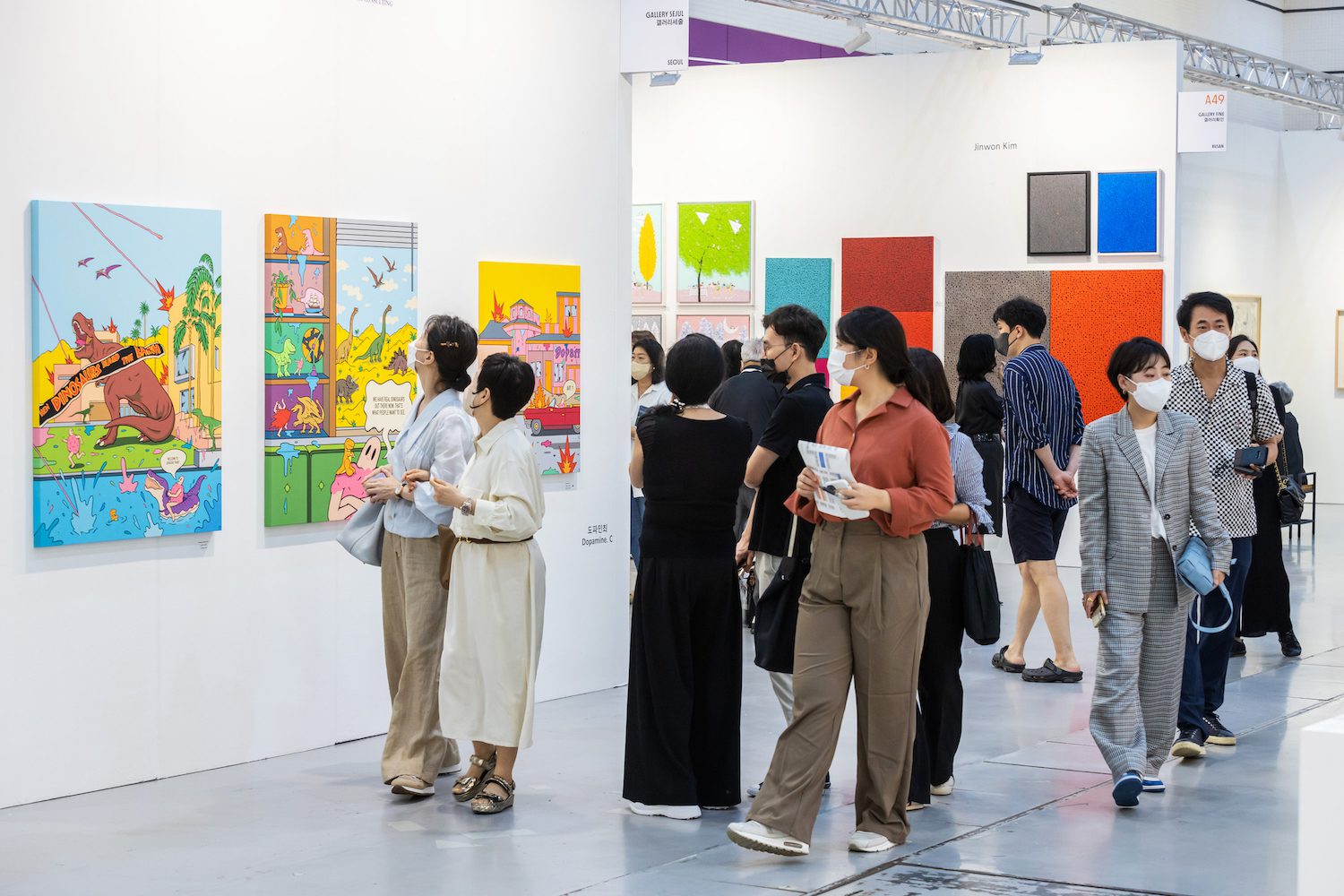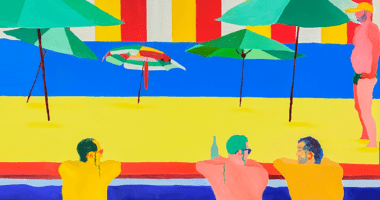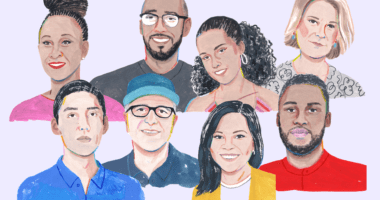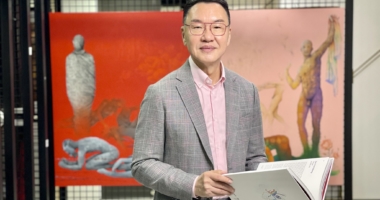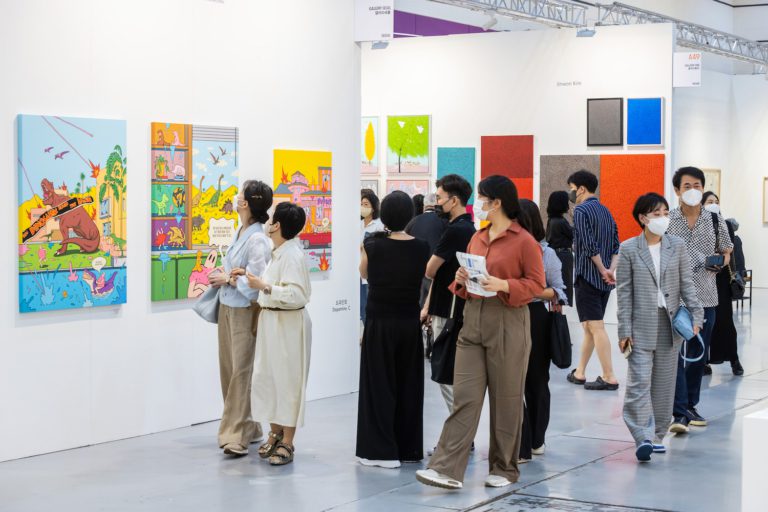
Installation view of Gallery Fine’s booth at Kiaf Seoul, 2022. Courtesy of Gallery Fine and Kiaf.
During the first week of September, Seoul was the place to be. Not just at Frieze’s first expansion into Asia, but also at Kiaf, which ran concurrently, and took place in the same convention center. Guests could even buy dual entry tickets, while plenty of galleries had a booth at each. After all, why choose?
This year, there are more fairs than ever for galleries to attend in September and October, with over a dozen major events in the international art world calendar, taking place from Johannesburg to Berlin to New York. With so many options, how have galleries decided where to focus their time and energy?
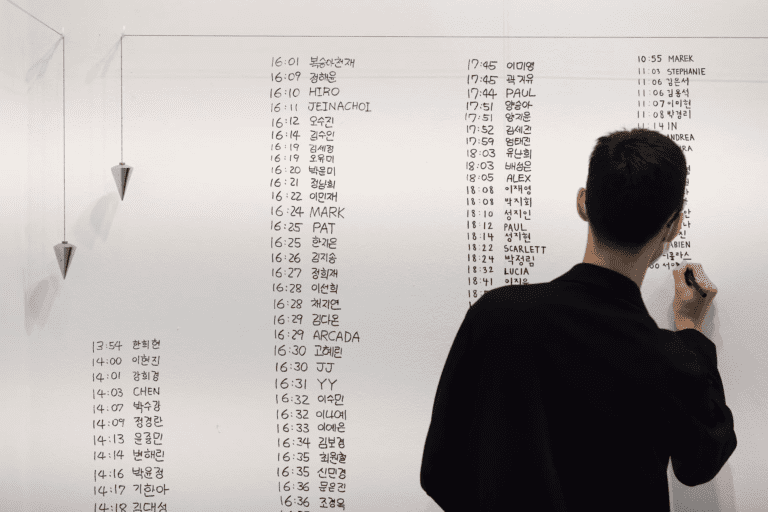
Roman Ondak, installation view in Esther Schipper’s booth at Kiaf Seoul, 2022. Courtesy of Esther Schipper and Kiaf.
Esther Schipper attended both Korean fairs, to coincide with the opening of the gallery’s new Seoul space. (It will also be attending Frieze London and Paris+.) Even so, the strategy for each fair still had to be tailored to the gallery’s specific audience, said Sunil Kim, its chief executive director.
“As art fairs allow us to connect with specific locations, we think of the fairs as an opportunity to…continue a presence and dialogue with each specific area and audience,” Kim said. For Kiaf, this meant presenting an installation by Roman Ondak, which she described as “a perfect meeting point between the history and heritage of Korean culture,” while for Frieze Seoul, “we wanted to take the opportunity to continue to update our Korean audience with the very latest work of our main artists.”
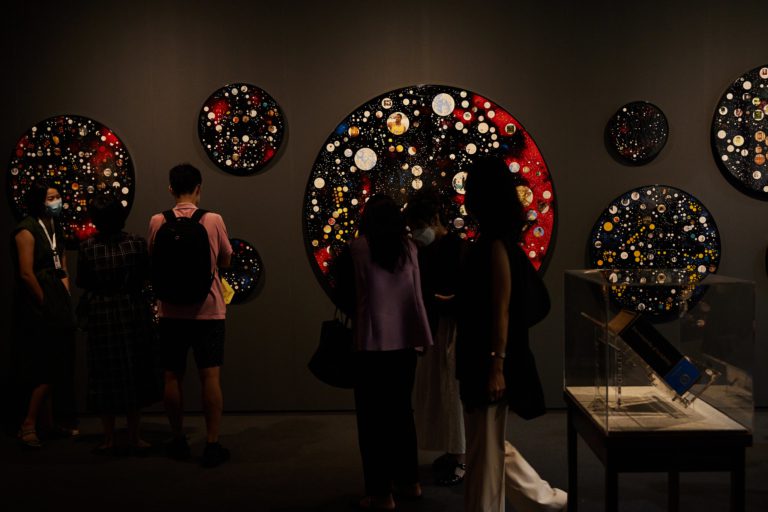
Tavares Strachan, installation view in Perrotin’s booth at Frieze Seoul, 2022. Photo by Let’s Studio. Courtesy of Frieze and Let’s Studio.
“This is a particularly exciting fair season with the inaugural editions of Frieze Seoul and Paris+ par Art Basel,” agreed Peggy Leboeuf, partner at Perrotin in New York. “Given that there are so many fairs this fall, the challenge for us is to make sure our presentations are varied and represent new works from a wide range of artists on our roster.” The gallery is attending six fairs in the next few months—including both Kiaf and Frieze Seoul—which is around the number that it has attended in previous years.
Yet the selection of which fairs to attend is still a calculation for the gallery: “Each fair has its own identity…and allows us an opportunity to meet new people and introduce our artists to different audiences,” Leboeuf said. At Frieze Seoul, Perrotin showed works by contemporary conceptual artist Tavares Strachan, for example, while at Independent 20th Century, the gallery showed a solo booth of work by painter Gérard Schneider.
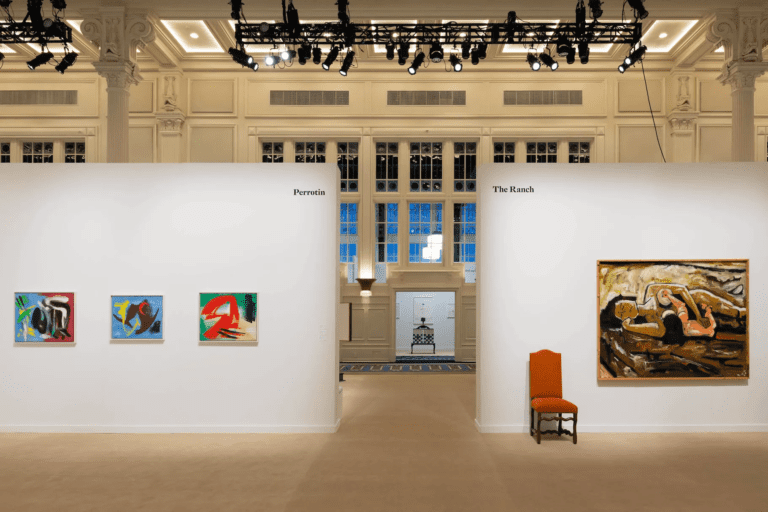
Installation view of Independent 20th Century, 2022. Photo by Alexa Hoyer. Courtesy of Perrotin, Salon 94 Design, The Ranch, and Independent New York.
Perhaps the most talked-about event is happening from October 20th through 23rd: Paris+ par Art Basel, which is taking FIAC’s usual spot in the Grand Palais Éphémère. This new fair, coming from an international behemoth replacing a homegrown predecessor, has a particular challenge: to “balance international and local identities,” Leboeuf said. “Paris is my hometown, so I look forward to seeing the expertise of MCH [Group, which owns Art Basel] combined with the fantastic cultural offerings of Paris.”
We crunched some numbers on participation in this fall’s fairs, which revealed that many galleries are making the most of growing opportunities: a full 64 galleries are attending three or more fairs in the next two months. Two galleries (David Zwirner and Perrotin) are even attending six, while Kukje Gallery, Hauser & Wirth, and Almine Rech will all be attending five.
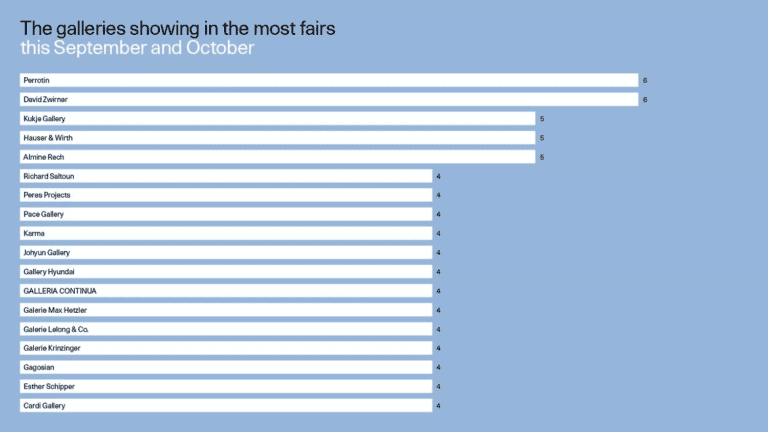
Of this cohort of “mega-participators” attending more than three fairs, some preferences emerge: 75% attended Frieze Seoul, 67% are attending Frieze London, and 64% are attending Paris+. Only half of these galleries will be showing at The Armory Show, even though the New York fair has many more exhibitors than these other fairs. Notably, six of this set of galleries are included in Independent’s new 20th century–focused fair, although there are only 28 galleries showing.
With so many fairs, new and old, on the calendar, galleries have had to choose: whether to push to try to attend as much as possible, or to make tough choices between fresh and established events. “We decided we wanted to do at least as many as last year, if not more,” said Paul Jenkins, international director at Brazilian gallery Almeida e Dale. For Jenkins, the pandemic has been instrumental in proving the necessity of these face-to-face interactions: “I have to say personally a few years ago, I did feel that the model was a little tired. But I think perhaps the pandemic…has disproved that point.”
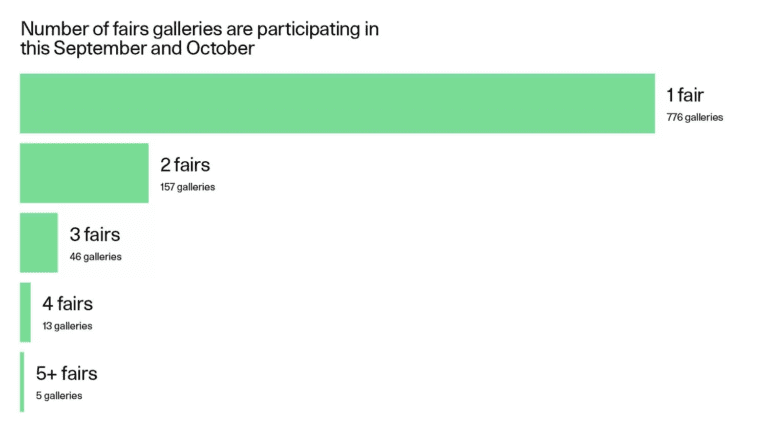
At The Armory Show, Almeida e Dale showed the work of Hélio Melo, whose paintings and drawings portray his life as a rubber tapper in the Amazon. The gallery’s fair booths are a key time to show collectors and curators this work in person: “Telling that story from a distance is difficult,” said Jenkins. With stops in London for Frieze Masters and New York, where the gallery also attended Independent 20th Century, Almeida e Dale is sticking with its tried-and-tested destinations before expanding to Asia.
“We cannot spread ourselves too thin,” Jenkins said, adding that the gallery would be considering the fairs in Singapore (where the hotly anticipated fair Art SG is planned), Taipei, Hong Kong, and Seoul for next year. With the gallery’s focus on Brazilian artists, Jenkins is hoping that London will offer opportunities to form relationships with dealers elsewhere: “We’d love to do shows by some of these artists in partnership with galleries in Europe,” he said. “Every time it’s been just a bonanza of contacts that we would never have had otherwise.”
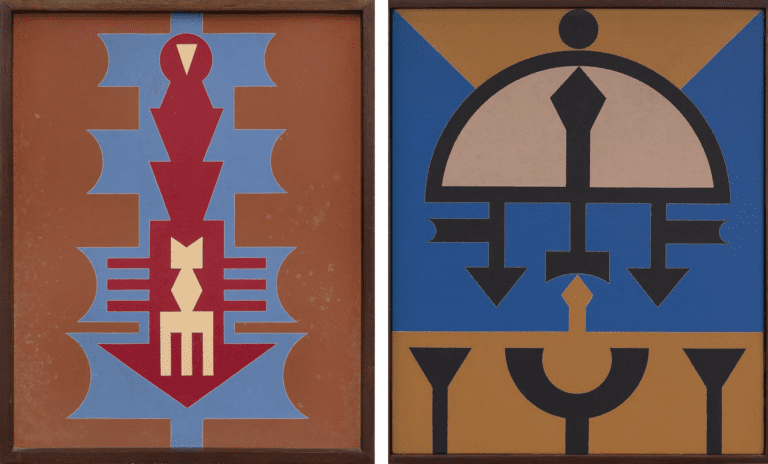
Rubem Valentim, Emblema 87, 1987. Courtesy ofAlmeida e Dale Galeria de Arte. Rubem Valentim, Emblema 85, 1985. Courtesy ofAlmeida e Dale Galeria de Arte.
Galerie Krinzinger, based in Vienna, is participating in four fairs, which is around the same number as most regular years, said gallery co-owner Thomas Krinzinger. “It’s even reduced a little bit,” he said. The gallery decided not to participate in any Asian fairs this fall to avoid the “enormous transport costs” that come with participating in any overseas fair. “We have to choose,” he said.
The dealer made it clear that the war in Ukraine is creating a lot of uncertainty for European galleries. “It’s a totally different situation than in the U.S., practically.” He was expecting that this mindset would also impact how collectors were feeling: “We hoped that after COVID, it would be a big party and everything will be fantastic,” he said. “But for Europe…well, everywhere really, it’s a big problem.” Galerie Krinzinger will be presenting Monica Bonvicini at Frieze London (in advance of her solo show at Berlin’s Neue Nationalgalerie), and in Paris and New York, a mix of artists from Hans Op de Beeck and Thomas Zipp to Waqas Khan and Marina Abramović.
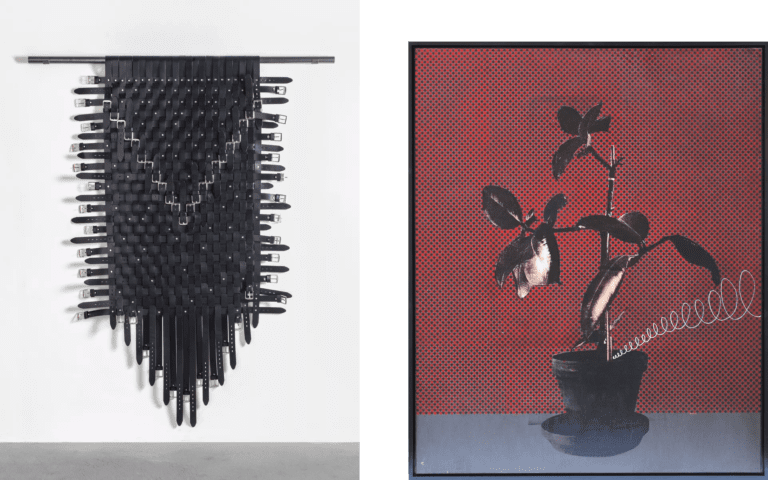
Monica Bonvicini, BeltDecke #4, 2017. Photo by Roman März. Courtesy of the artist and Galerie Krinzinger. Thomas Zipp, A.O.: eee, 2018. Courtesy of Galerie Krinzinger.
Krinzinger will also be attending viennacontemporary, a fair at which most exhibitors are only attending a couple of fairs this fall. Those that are attending more than two are all galleries with local spaces, making attendance less costly (Krinzinger is one, along with König Galerie and Galerie Eva Presenhuber).
Indeed, according to our analysis, most of the fairs with fewer than 100 exhibitors will be attended by galleries that are participating in only one or two fairs this fall. All of the participants at Positions Berlin, for example, as well as Chart in Copenhagen and FNB Art in Johannesburg, are attending two or fewer fairs throughout September and October. These smaller events, therefore, have ended up with a bigger range of galleries, and fewer of the “mega-participators” who are showing all over. With more unique participants, these fairs have potential to be more cozy and unique experiences for galleries and collectors alike.
This article was written by Josie Thaddeus-Johns.

